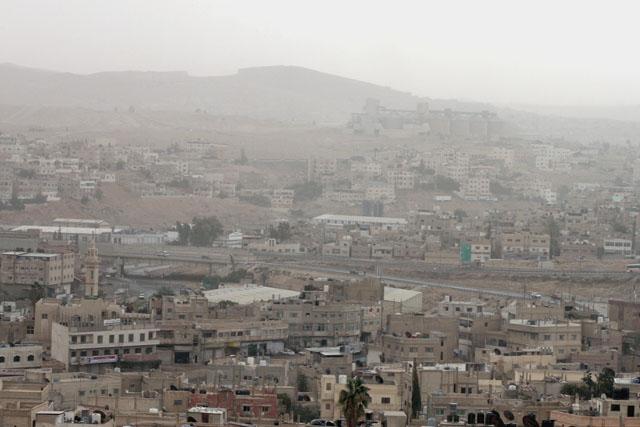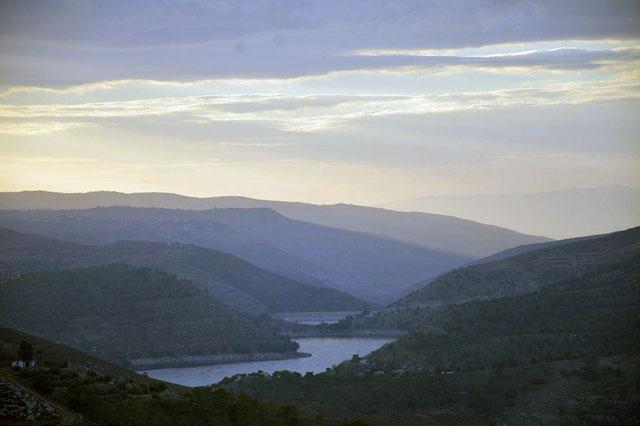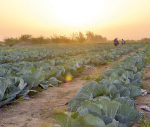You are here
Unstable weather conditions to continue this week — JMD
By Hana Namrouqa - Oct 11,2014 - Last updated at Oct 11,2014

AMMAN — The Kingdom will remain this week under the impact of unstable weather conditions, which will bring scattered showers and thunderstorms, the Jordan Meteorological Department (JMD) said on Saturday.
Unstable weather conditions usually occur during the transitional period between summer and autumn, JMD weather forecaster Ayman Suboh said, highlighting that warm winds merge with cold winds from Eastern Europe, causing the formation of clouds and thunderstorms.
“The weather during unstable conditions is usually warm and cloudy. Rain is also expected with floods forecast in the desert, especially the country’s eastern desert,” Suboh said.
On Sunday and Monday, the impact of unstable weather conditions will be weak, according to the forecaster.
“On Tuesday, another state of unstable weather condition is expected to prevail, when the weather will become cloudy and rainy, accompanied by thunderstorms,” Suboh noted.
Daytime temperatures in Amman will be 26°C on Sunday and 25°C on Monday and Tuesday, while night time temperatures in the capital will be 15°C on Sunday, 14°C on Monday and 13°C on Tuesday.
Unstable weather conditions during autumn bring less than 1 per cent of the country’s long-term annual average of eight billion cubic metres of rainfall, according to the JMD.
The country started witnessing its first rains of the wet season last week, according to the Ministry of Agriculture, which said that rain during this time of the year positively impacts various crops, particularly olive trees.
“The rain over the past week will have a very good impact on olive oil production. The rain has washed away the dirt from the olives, which means more olive oil and much better quality,” Agriculture Ministry Spokesperson Nimer Haddadin said on Saturday.
In preparation for the wet season, the Jordan Valley Authority (JVA) started examining the country’s major dams in preparation for storing rainwater, according to JVA Secretary General Saad Abu Hammour.
“The ministry’s technical teams are examining the dams’ storage conditions and equipment. The teams are inspecting their safety conditions and identifying which dams require maintenance,” Abu Hammour told The Jordan Times.
A report detailing the conditions of each dam and its equipment will be issued along with the recommended renovation and maintenance requirements if needed, he said, noting that the technical teams are expected to issue their report before the end of this month.
In addition to preparing the dams to store rainwater, the Water Ministry is also clearing out dirt from the streams in catchment areas which supply the dams with water to ensure they are not polluted or blocked with soil before the beginning of the rainy season.
Teams remove sediment from the dams to increase their capacity and prevent water salinity, and also clean up their shorelines, according to the ministry.
The dams currently hold 116 million cubic metres (mcm) or 35.6 per cent of their total capacity of 325mcm, according to Abu Hammour, who described the dams’ storage as “very low”.
Between 30 and 40 per cent of the water is stored as strategic reserve to ensure a continuous supply of water to farmers during a dry year, according to the JVA.
The Kingdom’s 10 major dams are: King Talal, Wadi Al Arab, Sharhabil, Kafrein, Wadi Shuaib, Karameh, Tannour, Waleh, Mujib and Wihdeh.
The Kingdom relies mainly on rainwater, but only 1.1 per cent of its total area receives an average of 400-600 millimetres of rain a year, according to official figures.
Approximately 91 per cent of Jordan’s total area of 97,000 square kilometres is situated in arid areas with an annual rainfall average of 50-200 millimetres, while 2.9 per cent of the country’s land is categorised as semi-arid.
The first rainfall is witnessed in mid-September or early October, while the wet season usually continues until February, according to the JMD.
Related Articles
AMMAN — The current dearth of rain is taking its toll on the Kingdom’s main dams, according to a government official, who said that storage
AMMAN — The Jordan Valley Authority (JVA) has concluded its annual check-up on the country’s dams in preparation for the winter season, acco
AMMAN — Around 15 million cubic metres (mcm) of water was channelled into the Kingdom's dams since the depression started affecting the coun















